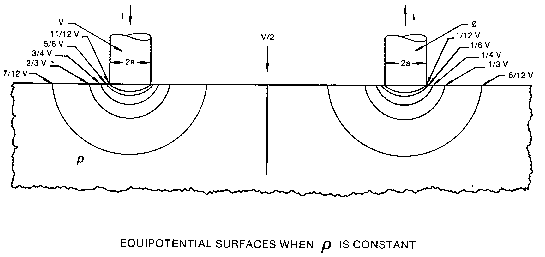|

When current flows from one probe to the other during a spreading resistance measurement, most of the resistance it encounters occurs in two small volumes of material centered under each probe, When the sample has uniform resistivity, each of these volumes is roughly hemispherical with a radius of only a couple of microns or so. In the common situation where resistivity changes with depth below the surface, the shape of the sampling volume is distorted. Moreover, the measured resistance is no longer proportional to the resistivity at the surface but to some kind of average of the resistivity throughout this distorted volume.
The purpose of "sampling volume correction" is to extract a true surface resistivity from the measured average value. To achieve this requires the solution to a very complicated boundary-value problem in potential theory.

|